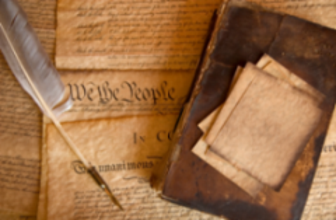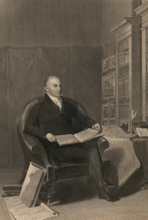A Brief History of OWM

The NIST Office of Weights and Measures (OWM) is proud to recognize over 185 years of legal metrology standards and services to the U.S. weights and measures community and to promote the international harmonization of equitable standards that facilitate both U.S. economic growth and global trade. In addition to an explicit mention to “fix the standard of weights and measures” in the U.S. Constitution (Article I, Section 8, Clause 5), OWM carries out a wide variety of functions and responsibilities as provided for under Treaties, laws, or Presidential Executive Order. Please see Our Responsibilities and Authorities for more information.
The first Office of Weights and Measures was established in 1836 in the Coast and Geodetic Survey of the U.S. Department of the Treasury and was originally formed to define the units of measure to be used in the construction of standards and balances provided to the States. It was astutely observed by John Quincy Adams (in the 1800s) that the weights and measures used by the customs houses were not uniform, and the need for a ‘fixed’ standard was apparent. Below are excerpts from his 1821 Report upon Weights and Measures:
“Weights and measures may be ranked among the necessaries of life, to every individual of human society. They enter into the economical arrangements and daily concerns of every family. They are necessary to every occupation of human industry; to the distribution and security of every species of property; to every transaction of trade and commerce; ... No legislator can attempt it with any prospect of success, or any regard to justice...”

“Should the fortunate period arrive when.... man will admit of the introduction of one universal standard for the use of all mankind, it is hoped and believed that the [platinum] metre will be that measure. ...it is with a view to uniformity that the preference is given, for the choice of a new standard, to the same metal of which that measure consists which has been the standard of our forefathers from the first settlement of the English colonies, and is exactly coeval with them.”
As the need for accurate weights and measures and other standards grew, the necessity for a “National Metrology Institute” drew widespread support from industry and academic experts. In 1901, Congress transformed the Office of Standard Weights and Measures into the National Bureau of Standards under the Treasury Department. In 1903, it was renamed as the Bureau of Standards and transferred to the new U.S. Department of Commerce and Labor.
Please see the States and Weights chapter of the NIST Feature Story "Why You Need Standards" for more details.
In 1905, the Bureau of Standards held the “First Annual Meeting of Sealers of Weights and Measures of the United States” (now the National Council on Weights and Measures (NCWM)) in which state representatives discussed the lack of uniform standards and regulatory oversight for weighing and measuring devices used in commerce and in law enforcement activities. The cooperation between the NIST OWM and NCWM still exists today (learn more here and via our FAQ page.)
Later, in 1934, the Bureau of Standards' name was changed back to the National Bureau of Standards (NBS). In 1988, NBS was renamed the National Institute of Standards and Technology (NIST). While NIST's functions and services have greatly expanded over the past century, OWM remains proud to serve as the original core office in the nation’s standards and physical science laboratory.
For more background on the origin and history of the NIST Handbooks 44, 130 and 133, please see The NIST Handbooks and NCWM: A Brief History.
For further interest, a more complete history of U.S. weights and measures standards (up until 1976) is published in NBS Special Publication 447.

